Abstract
Groups of male and female beagle dogs were given daily doses of 400 mg of various mixtures of naphthylamines for up to 109 months. Survivors were killed at 128 months. A variety of pathological conditions was diagnosed, but the only effect related to treatment was the induction of bladder neoplasms. All dogs which received pure 2-naphthylamine developed transitional-cell carcinomas of the bladder within 34 months. Two of 8 dogs receiving 6% 2-naphthylamine in 1-naphthylamine developed early carcinoma and 2/8 dogs receiving 0.5% 2-naphthylamine in 1-naphthylamine developed haemangioma of the bladder. Some of the dogs receiving 1-naphthylamine (total dose 950 g) and the controls had focal cystitis or hyperplasia, but no neoplasia of the bladder. These results confirm the carcinogenicity of 2-naphthylamine to dogs. No carcinogenic effect of 1-naphthylamine was observed, indicating that it is at least 200 times less potent as a carcinogen than 2-naphthylamine. The incidence of bladder cancer in dogs fed mixtures of both naphthylamines explains why previous experimental and epidemiological studies of impure 1-naphthylamine have revealed carcinogenicity.
Full text
PDF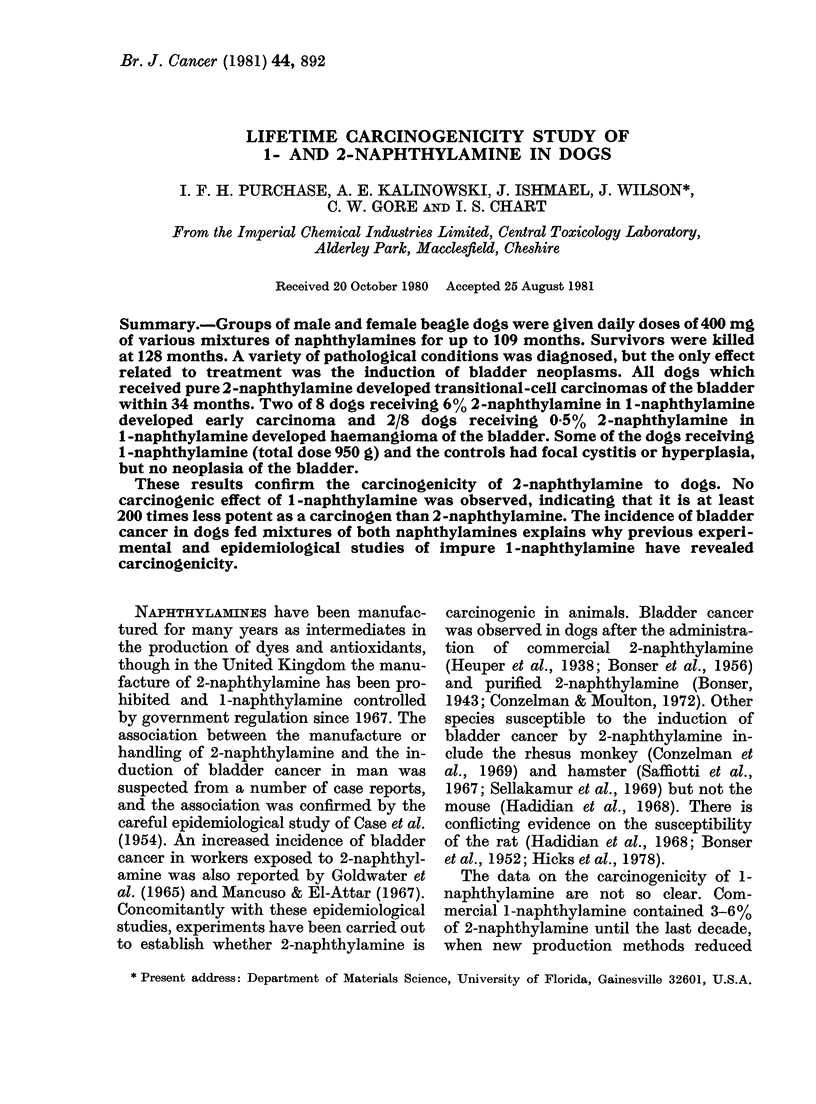
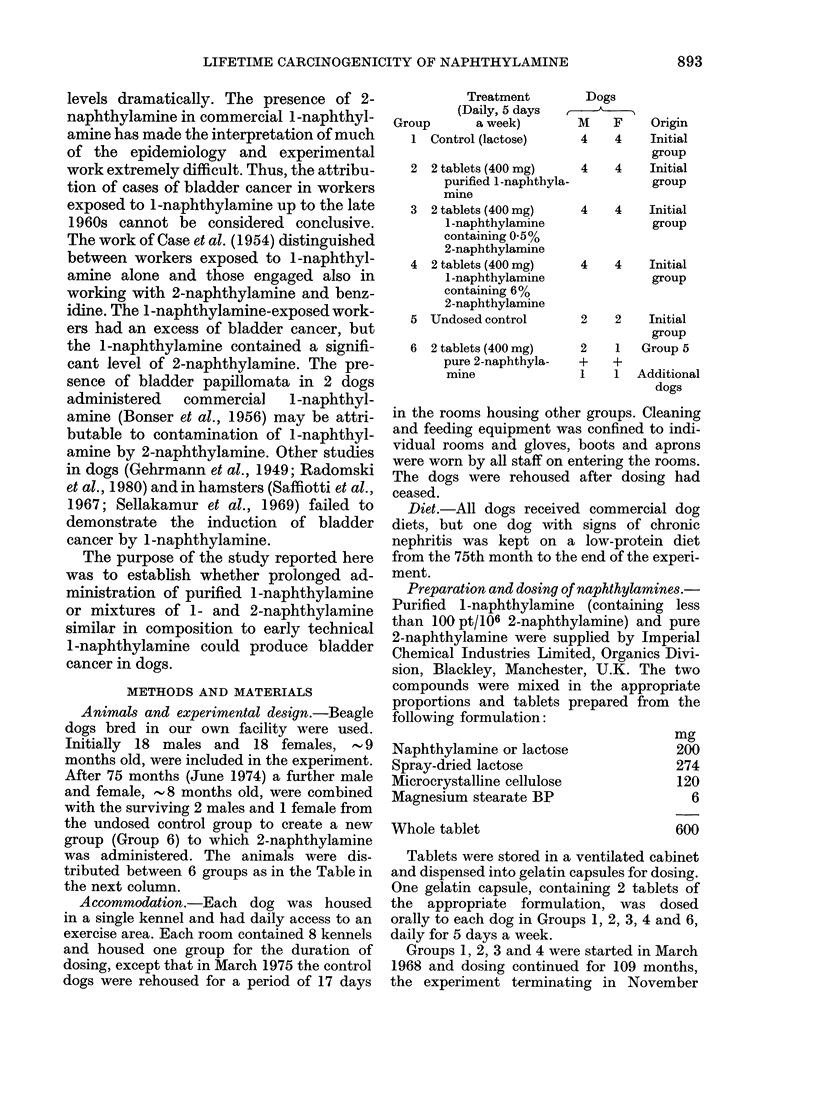
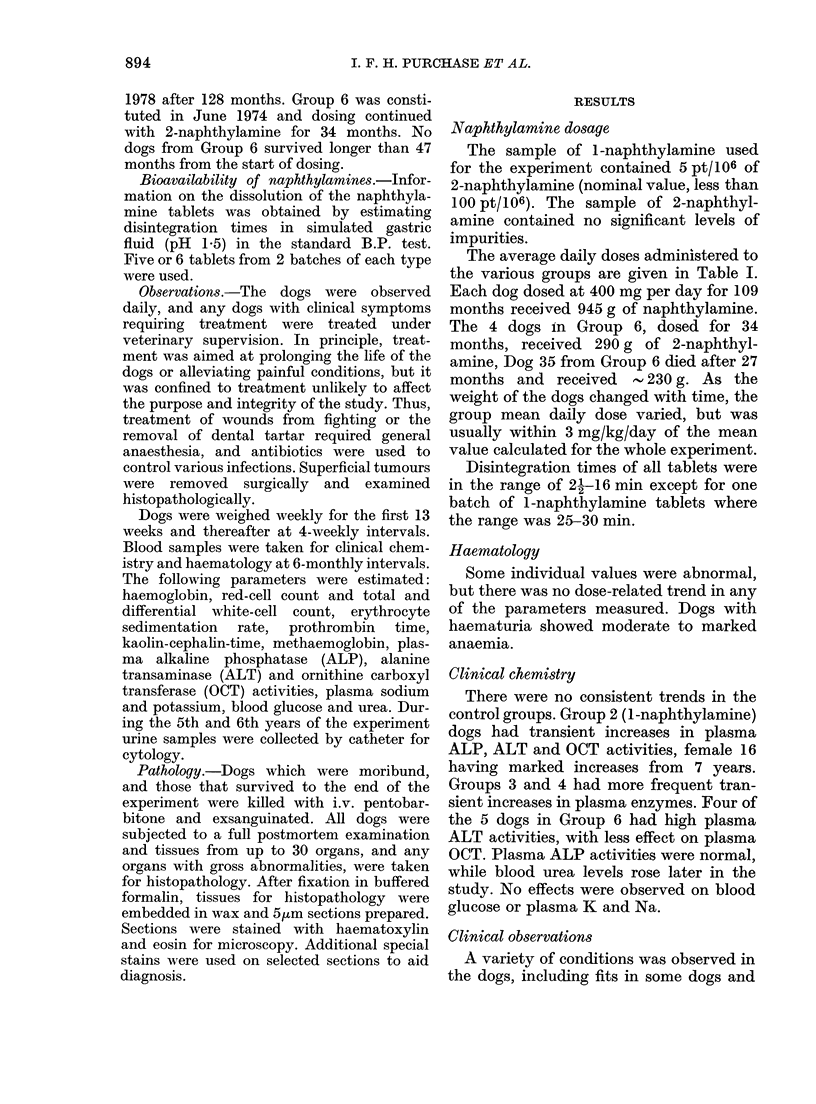
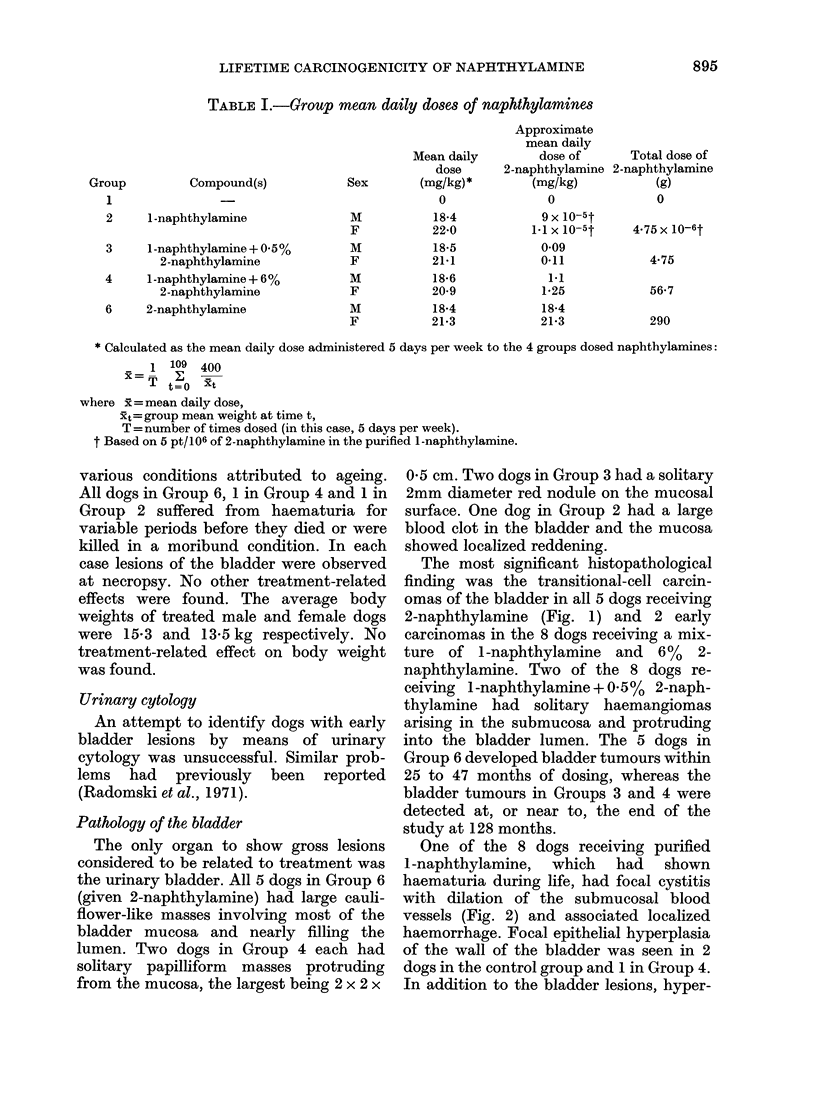
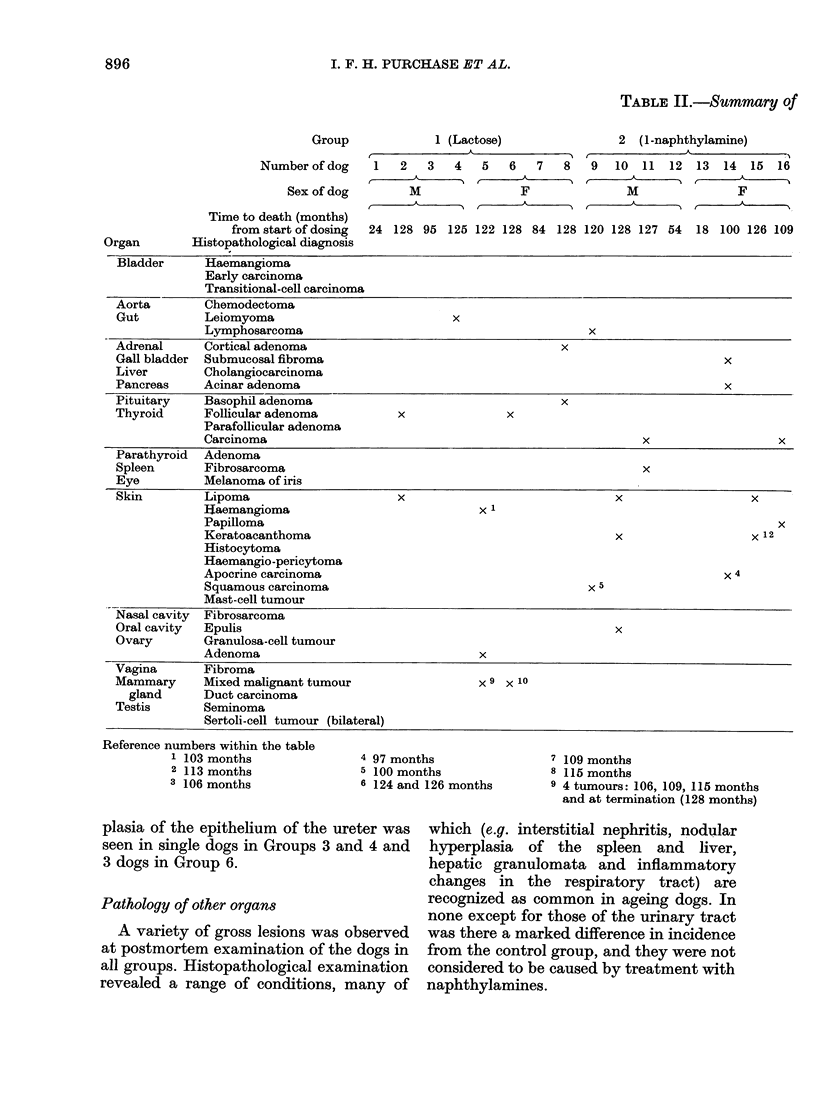

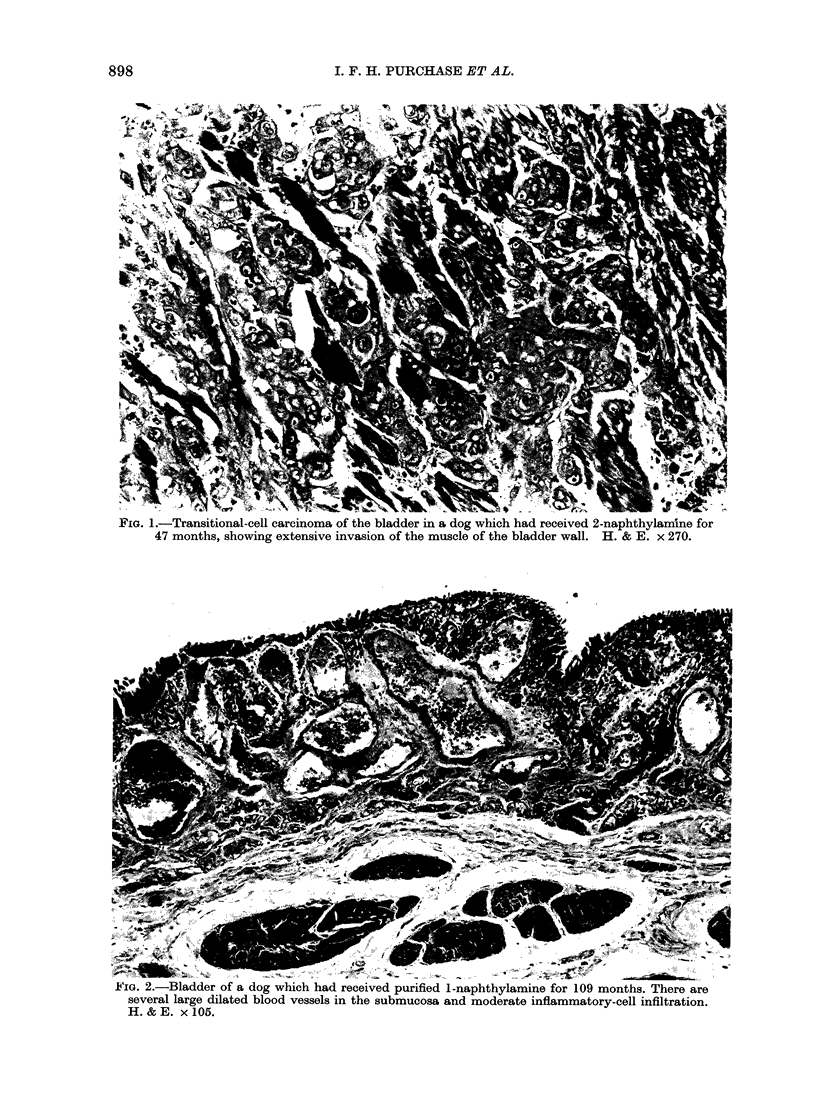
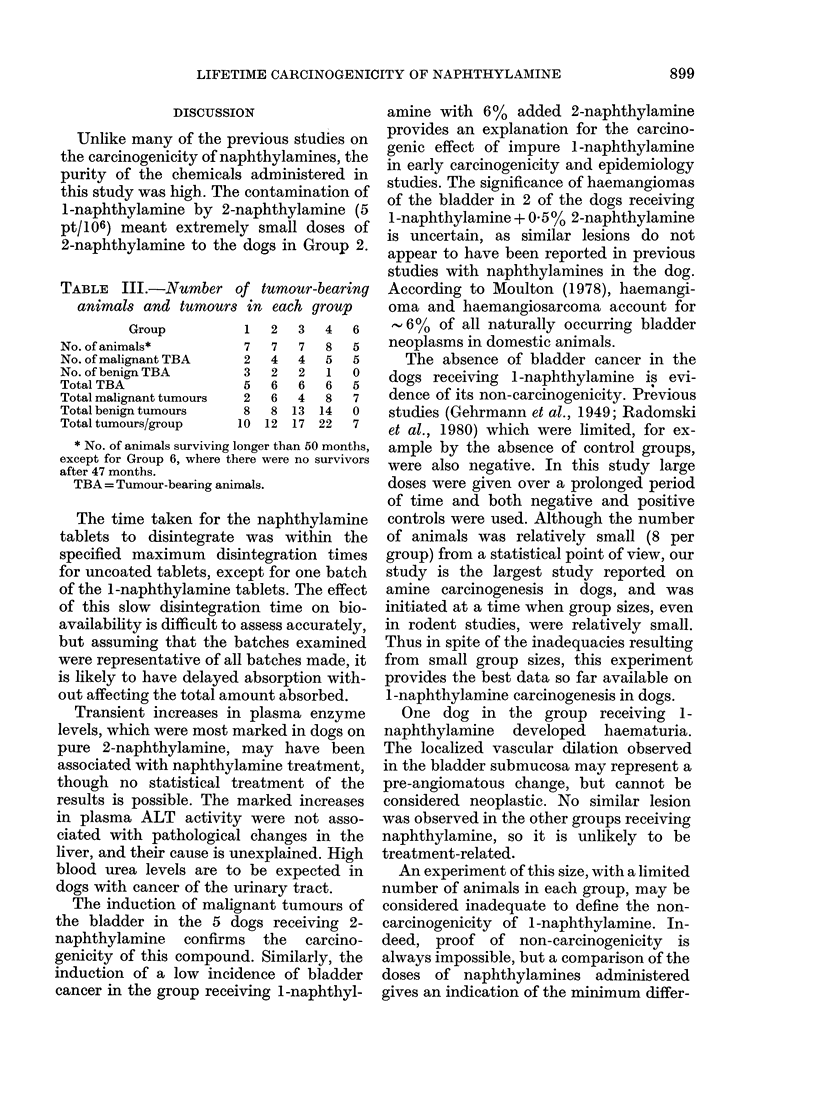
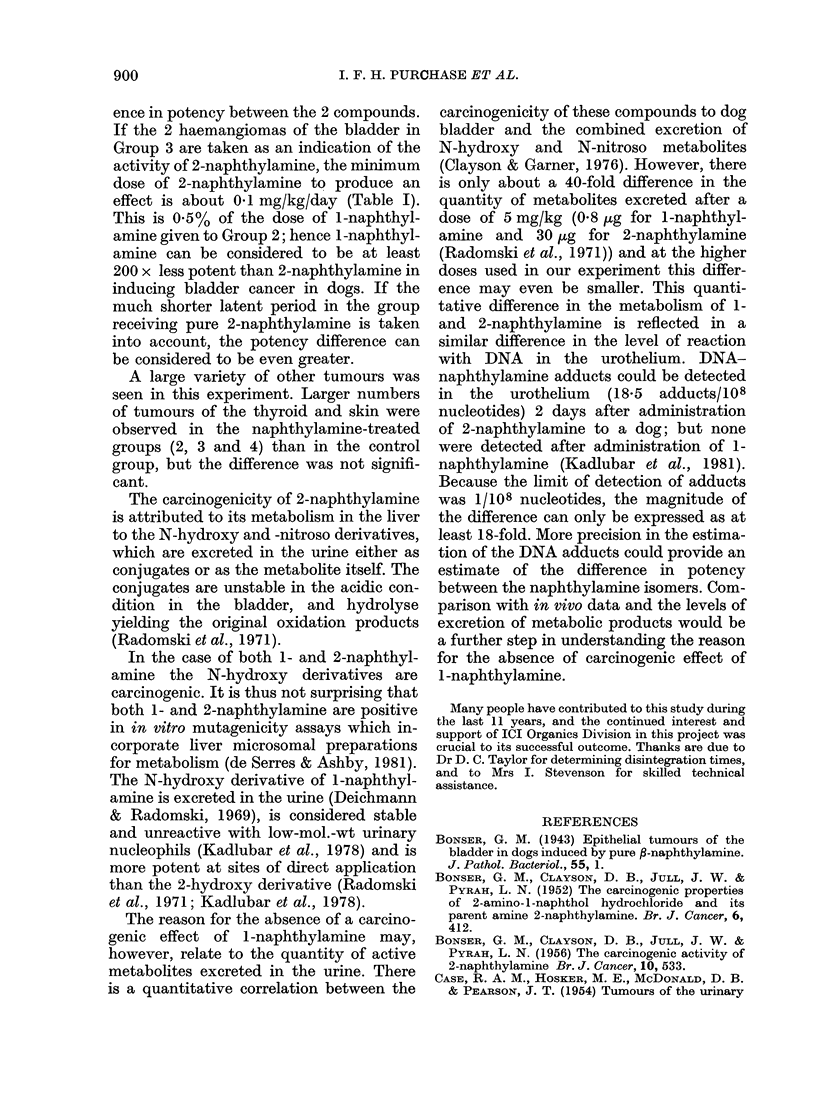

Images in this article
Selected References
These references are in PubMed. This may not be the complete list of references from this article.
- BONSER G. M., CLAYSON D. B., JULL J. W., PYRAH L. N. The carcinogenic activity of 2-naphthylamine. Br J Cancer. 1956 Sep;10(3):533–538. doi: 10.1038/bjc.1956.62. [DOI] [PMC free article] [PubMed] [Google Scholar]
- BONSER G. M., CLAYSON D. B., JULL J. W., PYRAH L. N. The carcinogenic properties of 2-amino-1-naphthol hydrochloride and its parent amine 2-naphthylamine. Br J Cancer. 1952 Dec;6(4):412–424. doi: 10.1038/bjc.1952.47. [DOI] [PMC free article] [PubMed] [Google Scholar]
- Conzelman G. M., Jr, Moulton J. E. Dose-response relationships of the bladder tumorigen 2-naphthylamine: a study in beagle dogs. J Natl Cancer Inst. 1972 Jul;49(1):193–205. [PubMed] [Google Scholar]
- Conzelman G. M., Jr, Moulton J. E., Flanders L. E., 3rd, Springer K., Crout D. W. Induction of transitional cell carcinomas of the urinary bladder in monkeys fed 2-naphthylamine. J Natl Cancer Inst. 1969 May;42(5):825–836. [PubMed] [Google Scholar]
- Deichmann W. B., Radomski J. L. Carcinogenicity and metabolism of aromatic amines in the dog. J Natl Cancer Inst. 1969 Jul;43(1):263–269. [PubMed] [Google Scholar]
- Goldwater L. J., Rosso A. J., Kleinfeld M. Bladder tumors in a coal tar dye plant. Arch Environ Health. 1965 Dec;11(6):814–817. doi: 10.1080/00039896.1965.10664306. [DOI] [PubMed] [Google Scholar]
- Hadidian Z., Fredrickson T. N., Weisburger E. K., Weisburger J. H., Glass R. M., Mantel N. Tests for chemical carcinogens. Report on the activity of derivatives of aromatic amines, nitrosamines, quinolines, nitroalkanes, amides, epoxides, aziridines, and purine antimetabolites. J Natl Cancer Inst. 1968 Oct;41(4):985–1036. [PubMed] [Google Scholar]
- Kadlubar F. F., Anson J. F., Dooley K. L., Beland F. A. Formation of urothelial and hepatic DNA adducts from carcinogen 2-naphthylamine. Carcinogenesis. 1981;2(5):467–470. doi: 10.1093/carcin/2.5.467. [DOI] [PubMed] [Google Scholar]
- Kadlubar F. F., Miller J. A., Miller E. C. Guanyl O6-arylamination and O6-arylation of DNA by the carcinogen N-hydroxy-1-naphthylamine. Cancer Res. 1978 Nov;38(11 Pt 1):3628–3638. [PubMed] [Google Scholar]
- Mancuso T. F., el-Attar A. A. Cohort study of workers exposed to betanaphthylamine and benzidine. J Occup Med. 1967 Jun;9(6):277–285. [PubMed] [Google Scholar]
- Radomski J. L., Brill E., Deichmann W. B., Glass E. M. Carcinogenicity testing of N-hydroxy and other oxidation and decomposition products of 1- and 2-naphthylamine. Cancer Res. 1971 Oct;31(10):1461–1467. [PubMed] [Google Scholar]
- Radomski J. L., Deichmann W. B., Altman N. H., Radomski T. Failure of pure 1-naphthylamine to induce bladder tumors in dogs. Cancer Res. 1980 Oct;40(10):3537–3539. [PubMed] [Google Scholar]




